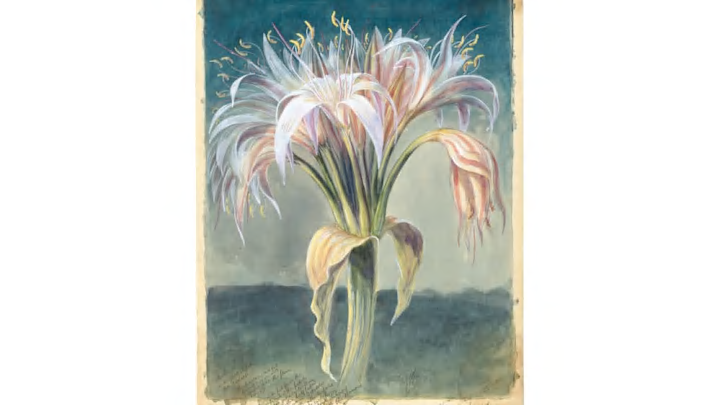Botanical Sketchbooks,a new book by Helen and William Bynum, collects some of the best drawings of the world's flora dating back to the 15th century.
In the days before photography, naturalists relied heavily on sketches. Centuries ago, as European exploration began reaching farther afield and bringing back completely unfamiliar specimens, illustrations helped adventurers, scientists, and artists understand previously unknown worlds, a practice that extended into Darwin’s time.
A new book of illustrations from Princeton Architectural Press, , explores how artists have recorded the plant world since the 15th century by looking at their early drafts and simple illustrations. Here are six timeless sketches from the book.

Sketching is a surprisingly new phenomenon. It wasn't until the late 17th century that the word "sketch" itself appeared in English, coming from the German skizze or Dutch schets. “The popularity of the act was in part dependent on the availability of the materials," as authors Helen and William Bynum write. "Drawing became much more widespread, indeed a recognized activity in itself, as paper became cheaper and more plentiful in 15th century Europe. Sketches became a way of accumulating and storing complex visual information.”

What was perhaps the first recognized botanical sketch was created in the early 1470s, when the printmaker and artist Martin Schongauer made a study of three peonies direct from observation, rather than drawing them from memory. By 1874, when English artist and poet Edward Lear was traveling through India creating landscape sketches like the one above, it had become a more established art. Lear's work was impressive enough that Queen Victoria invited him to give her drawing lessons.

Botanical sketches can range from a few dashed lines on a page to detailed, colored illustrations. “There are images from the rudimentary to the more complete, although one criterion was that the plants featured should be for the most part recognizable and identifiable," the Bynums write of their selections for the book. "The aim has been to offer a broad selection of the many wonderful possibilities.”

The military gave some amateur plant obsessives opportunities to explore the fauna of far-flung lands. John Champion, for instance, traveled the world as a British infantry soldier, sending home detailed drawings and extensive notes on plants he thought might be unknown to scientists back in Europe. Two of the species he wrote home about from Sri Lanka, Dalbergia championii and Xylopia championii, were named after him.

Walter Hood Fitch, a prolific botanical artist, pioneered the craft of using lithography in illustrations while working at London's Kew Gardens in the 19th century. By the time he died in 1892, he had published 12,000 botanical illustrations in total, and created many more unpublished works that are still held at Kew.

Botanical art has largely gone out of fashion since the advent of photography, but sketching remains popular within scientific disciplines. As German botanist Julius von Sachs put it, “If you haven’t drawn it, you haven’t seen it.”

You can find Botanical Sketchbooks for $27 on Amazon.
All images courtesy Princeton Architectural Press
